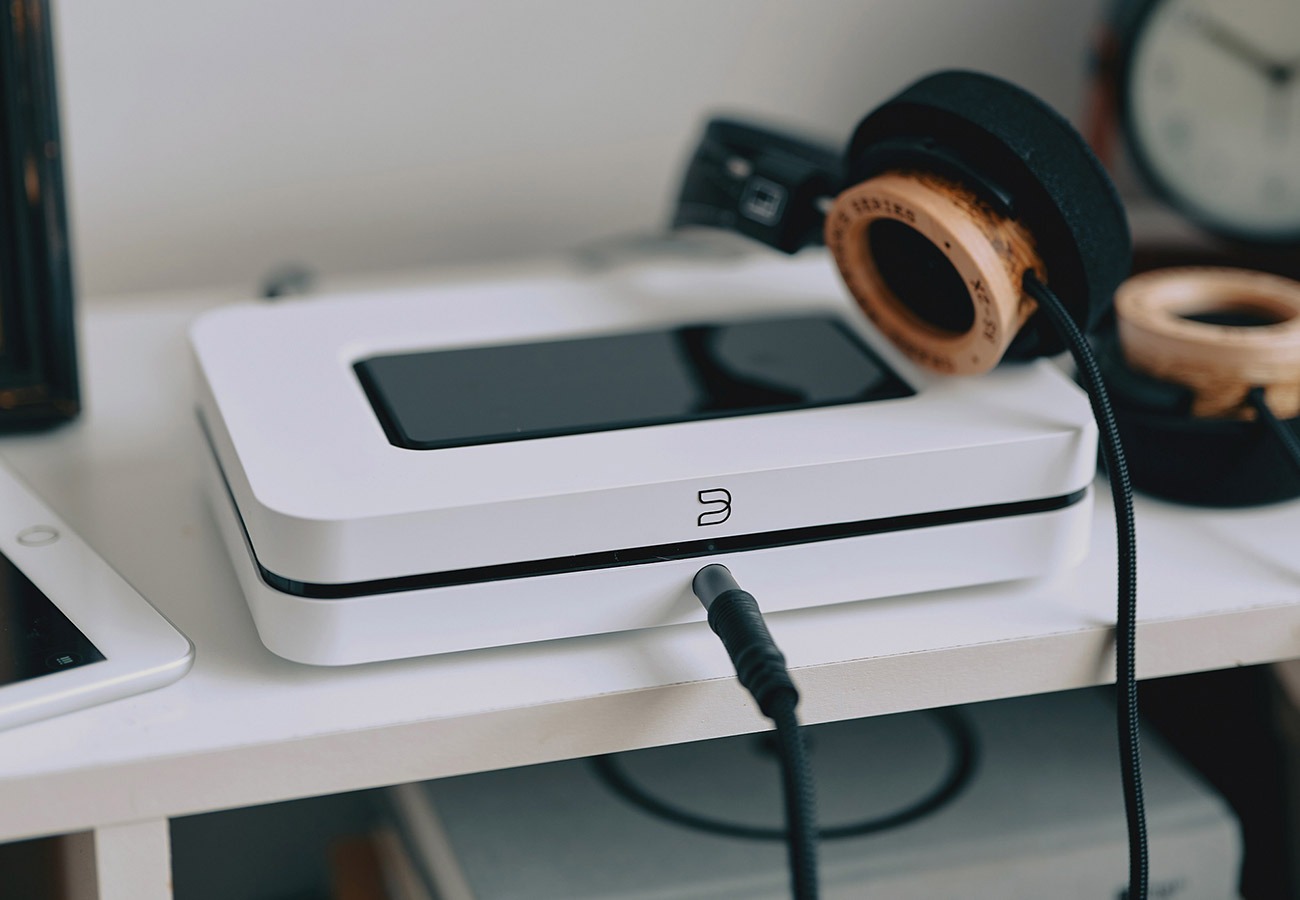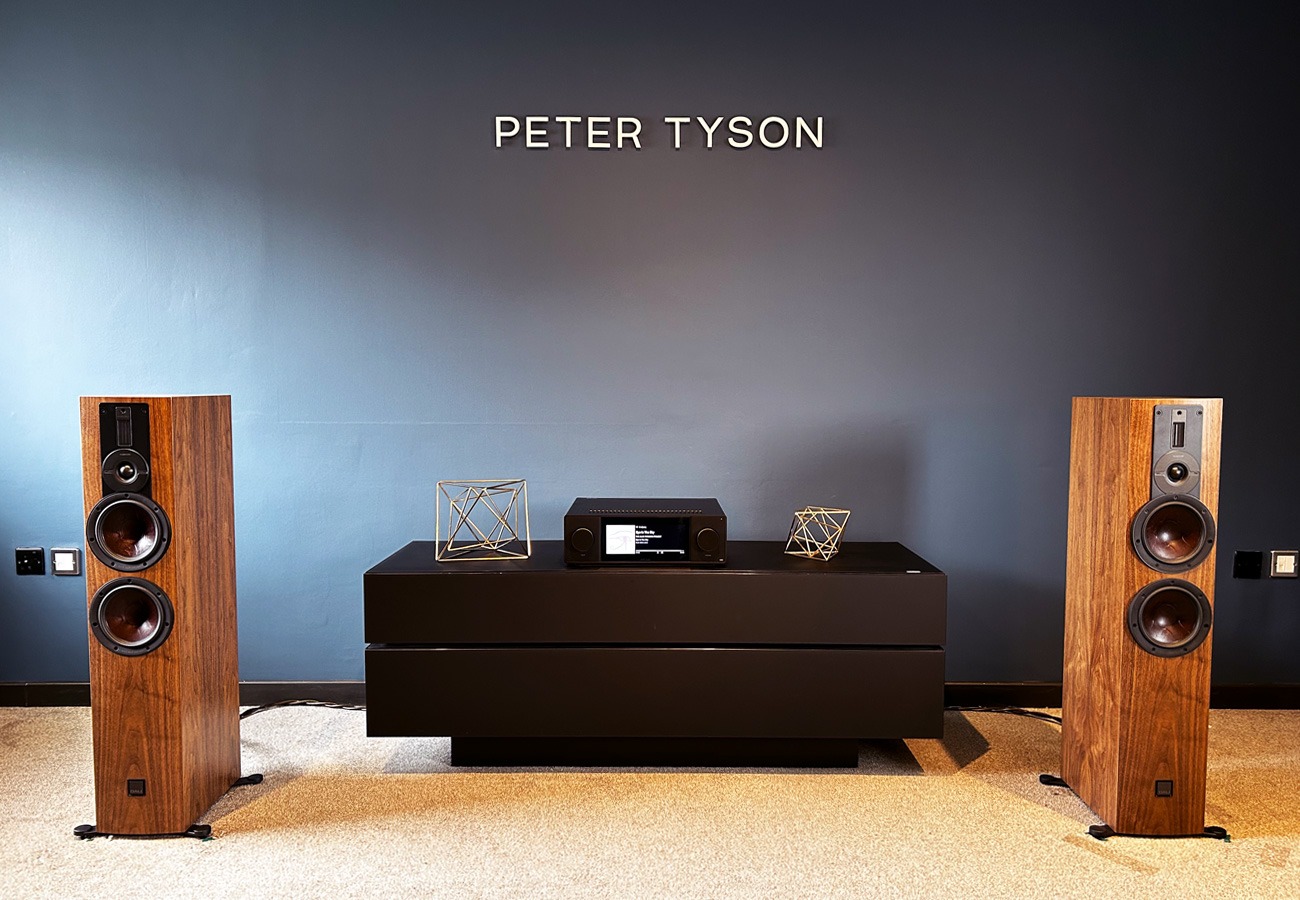
Getting into hi-fi can feel like learning a new language. With so many technical terms flying around, it’s easy to get lost in the noise.
At Peter Tyson we’ve been speaking the language of hi-fi since 1966, so we know what we’re talking about. When it comes to what products pair well together, we’ll point you in the right direction.
However, sometimes when we start getting into what you need, we might use some of the words and phrases we cover here and you’d be forgiven for not knowing their meaning, especially if you’ve never bought a hi-fi before.
So, whether you're a new enthusiast or just want to sharpen your understanding, at Peter Tyson we’ve broken down 20 of the most common hi-fi terms you’re likely to hear.
Short, sharp, and free of fluff — let’s get into it...


1. Source
This is where your music begins. A CD player, streamer, turntable, or even your phone — all of these are sources. Without one, you’ve got nothing to listen to.
2. DAC (Digital-to-Analogue Converter)
A DAC turns digital files into analogue sound. You’ll find DACs in streamers, phones, CD players and amps — but external DACs can often sound better. If you stream music, this is one of the most important bits of kit in your system.
3. Phono Stage
A must for vinyl. Turntables need extra amplification before hitting your amp — that’s the job of the phono stage. Some amps have one built-in. Others don’t. If you're playing records and the volume’s too quiet, this is probably why.


4. Integrated Amp
Combines a preamp and power amp in one box. Plug in your source and speakers — job done.
5. Pre & Power Amps
Split into two boxes. The preamp handles volume and inputs, while the power amp drives the speakers. A common setup in high-end systems.
6. Watts per Channel (WPC)
This tells you how much power an amplifier sends to each speaker. More watts doesn’t always mean better — it’s about matching your amp and speakers properly. We can help with that.
7. Impedance
Measured in ohms (Ω), this refers to how much electrical resistance your speakers have. Most hi-fi speakers are rated at 4, 6 or 8 ohms. Your amp should be able to handle the speaker’s load comfortably. Put simply, you should never connect speakers with a impedance that is below the amplifier's lowest range.
Again this is something we are experts on so feel free to ask if the new speakers you're look at will match with your current amp.


8. Sensitivity
How loud a speaker gets with a given amount of power. A speaker rated at 90dB sensitivity is more efficient than one rated at 85dB using the same amp. It’s a big deal if you have a low-powered amp.
9. Balanced vs Unbalanced
Balanced connections (like XLR) reject interference — great for longer cable runs or studio-grade systems.
Unbalanced (like RCA) are more common in traditional hi-fi. Both can sound great. Balanced is just a bit more serious.
10 & 11. Bi-Wiring / Bi-Amping
Bi-Wiring: Using two sets of speaker cables from one amp to your speaker (if it has separate terminals for bass and treble).
Bi-Amping: Running two amps — one for bass, one for treble. This is serious audiophile territory but can unlock more control and clarity. Your speakers must support bi-amping for this to work so check yours are compatible.
If you're interested in either we suggest getting in touch, as with any of these there are specifics to consider.
12. Streaming Protocols
This refers to AirPlay, Chromecast, Bluetooth, Spotify Connect, DLNA — and are all ways of sending music wirelessly.
Some compress the audio (like Bluetooth). Others, like AirPlay 2 or Chromecast, can handle full CD quality or better.


13. Lossy vs Lossless
Lossy: MP3, AAC, etc. Smaller files, lower quality.
Lossless: FLAC, ALAC, WAV. No sound lost in compression. These are what serious listeners aim for.
14. Hi-Res Audio
Generally, refers to audio files with greater detail than CD quality. Think 24-bit/96kHz and above. You’ll need a DAC, amp, and speakers that can reveal the benefits — and the right music source.
15. Crossover
The component inside a speaker that splits the audio signal into different frequency bands. Sends bass to the woofer, mids to the midrange, treble to the tweeter. A well-designed crossover makes everything sound more coherent.
16. Soundstage
This is how wide, deep and three-dimensional the music sounds. A good system can make it feel like instruments and voices are floating in space. It's one of the reasons people fall in love with hi-fi.


17. Transparency
A word reviewers love. It means the system adds very little colouration — you’re hearing the music, not the gear. The more transparent the system, the closer your music will be to how the artist intended, you may even hear details you never noticed before.
18. Warm / Bright / Neutral
If you’ve never taken time to appreciate a proper hi-fi system, words like warm, bright and natural can sound like people describing a wine at a tasting session. These words describe the tone or character of a system.
Warm: Slightly bassy, smooth, forgiving.
Bright: Emphasised treble, more sparkle, can be fatiguing.
Neutral: Balanced. Nothing dominates. A good goal for most systems.
19. Bookshelf vs Floorstanding Speakers
Bookshelf: Smaller, sit on stands or shelves. Great for smaller rooms.
Floorstanding: Larger, with more drivers. Bigger bass, more scale.
20. Clipping
When an amp is pushed beyond its limits and distorts. It’s harsh, potentially damaging, and a sign you need more power (or to turn it down).
Need More Help?
Still confused? That’s what we’re here for. Pop into Peter Tyson Carlisle, Newcastle or Workington, give us a call, or start a live chat with us right here on our website. We’ll help decode your setup and get you listening the way you want.